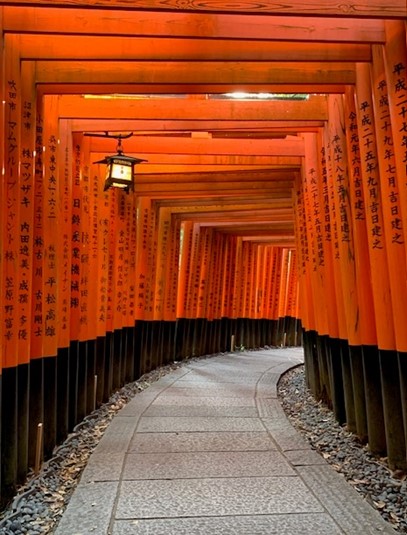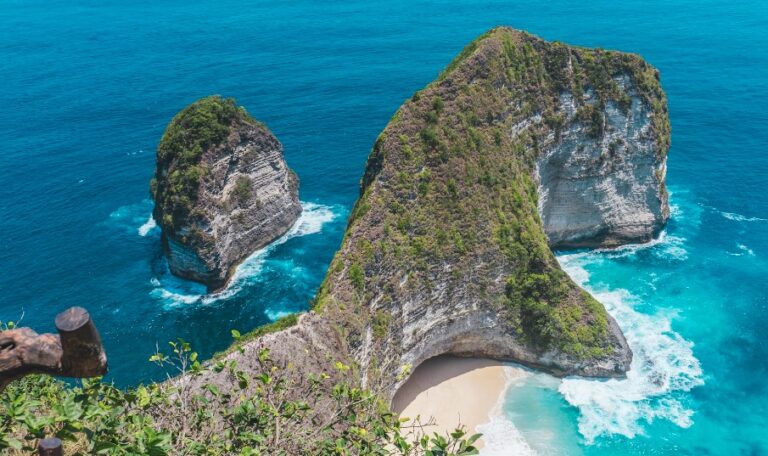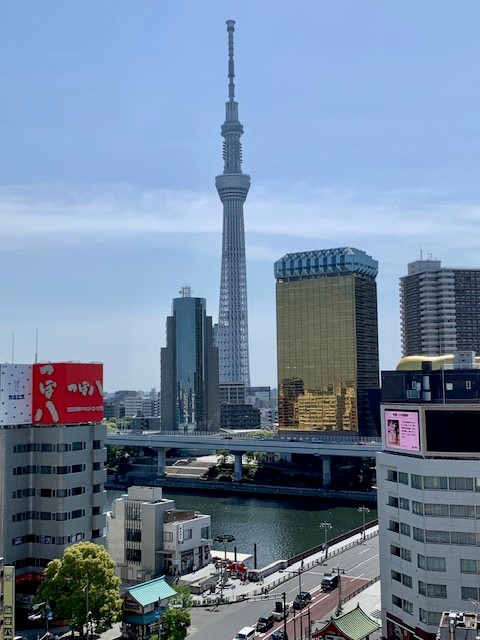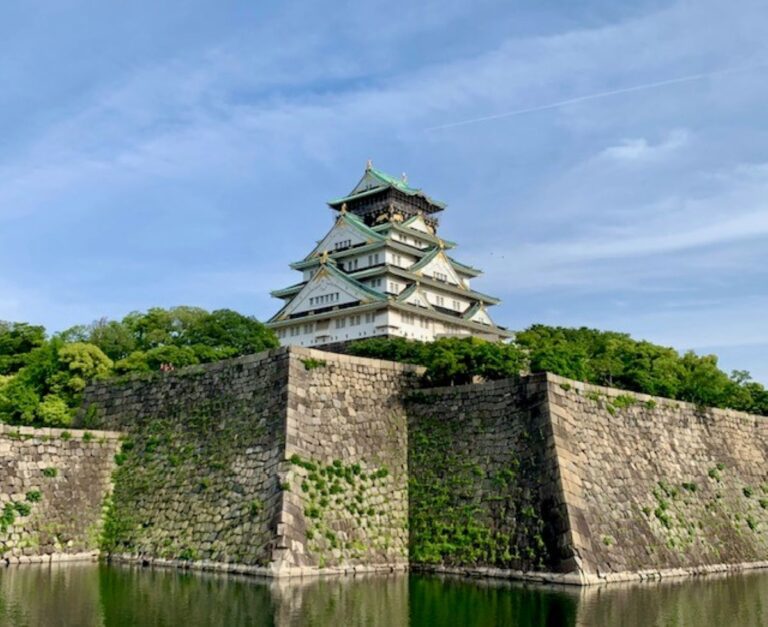This is the perfect 7 day Japan Tour, incorporating everything you need to have a great time on your first time in Japan. From where to stay, best places to see and how to get around
Japan is one of my favourite countries I have visited. Where ancient traditions and cutting-edge modernity blend seamlessly. From the neon-lit streets of Tokyo to the tranquil temples of Kyoto and the vibrant culinary scenes of Osaka. This comprehensive guide ensures you capture the essence of Japan, exploring its most iconic destinations and hidden gems alike.
You will soon be crossing the Shibuya Scramble like a pro or gawping out the window of a bullet train at the beauty of a snow-capped Mount Fuji!
GETTING TO JAPAN
Traveling to Tokyo from international destinations is a journey well-served by two major airports. Narita International Airport (NRT) and Haneda Airport (HND).
Narita airport, located about 60 kilometres east of central Tokyo, is a global gateway, connecting travellers from all corners of the world to Japan’s bustling capital. It primarily handles international flights and offers a range of transportation options to the city. These include the Narita Express (N’EX) train, limousine buses, and taxis. I have written in depth about the best transfer options from Narita. If you are arriving early or very late consider an airport hotel with complimentary shuttle to and from the terminals
Haneda, situated closer to the city centre, has traditionally been the domestic hub but has expanded its international terminal. This makes it an increasingly popular choice for direct flights from various countries.
Offering both convenience and efficiency, Haneda allows for quicker access to Tokyo’s heart through a variety of public transport, including the Tokyo Monorail and Keikyu Line. If you’re arriving late have a look at the best hotels near the airport with free shuttle buses.
Disclaimer: This article features affiliate links. If you click these links, and choose to book with that hotel or company, I will earn a small commission at no extra cost to you. I appreciate the support that allows me to continue providing this information
TOP TIP: We used our mobiles for directions, booking and transport. Coming from the UK our network providers had packages available for data but they were a total rip off. We chose to use Airalo for an eSIM. Giving us all the data we needed at a fraction of the price, without needing to get a physical SIM or change number. It has been fantastic in multiple countries! Get yours here
WHERE TO STAY IN TOKYO
The perfect 7 day tour of Japan was always going to have Tokyo as the first stop. Choosing the perfect place to base yourself in this expansive metropolis can make or break your first time. Providing not just a place to rest, but a more convenient location from which to explore every full day, an important consideration.
Whether you’re drawn to the electric energy of youth and fashion, the allure of skyscrapers and nightlife, or the charm of traditional streets and temples, Tokyo has a neighbourhood that resonates with every traveller.
I explore the pros and cons of three of the most popular below. For reference we stayed in Shinjuku for Tokyo station links and nightlife and would highly recommend
TOP TIP: Have a look at my guide to the best hotels in Tokyo for all budgets and my guide to the best Tokyo restaurants
Travelling as a family or big group? Here are my recommendations for the perfect family hotels in Tokyo
Shibuya: The Heartbeat of Youth and Innovation
Pros:
- Shibuya is a vibrant district known for its youthful energy, fashion, and nightlife.
- Offers easy access to the famous Shibuya Crossing and a plethora of dining, shopping, and entertainment options.
- Well-connected to other parts of Tokyo via the JR Yamanote Line and other subway lines.
Cons:
- Can be overwhelmingly crowded, especially during peak hours and weekends.
- Accommodation prices can be higher due to its popularity and central location.
Getting There from Haneda Airport:
The best way is to take the Keikyu Line directly to Shibuya Station. The journey takes about 30 minutes and is both convenient and affordable.
Shinjuku: A Mix of Bustle and Green Retreats
Pros:
- Home to the world’s busiest train station, offering unparalleled connectivity across Tokyo and beyond.
- A diverse area that combines skyscrapers, shopping, nightlife, and serene parks like Shinjuku Gyoen.
- Great place for a wide range of accommodations, from luxury hotels to budget-friendly options.
Cons:
- The sheer size and crowd levels can be daunting for first-time visitors.
- Nightlife areas might not be suitable for those seeking a quieter stay.
Getting There from Haneda Airport:
The easiest way is to take the Keikyu Line to Shinagawa Station and transfer to the JR Yamanote Line to Shinjuku Station. Total travel time is approximately 45 minutes.
TOP TIP! Make sure you are fully prepared with my “First time visitor to Japan starter kit”
BREAK DOWN THE LANGUAGE BARRIER: The key phrases to learn and technology to use to make your first trip to Japan easy
HOW TO STAY CONNECTED ON THE GO: The cheapest data and easiest way to make sure you can access everything you need
HOW TO AVOID CURRENCY FEES LIKE A PRO: The best cards for travel and withdrawing cash
22 SMARTPHONE APPS TO MAKE YOUR TRIP EASIER: The ultimate FREE apps to download before you go
SAVE 30-90 MINUTES AT CUSTOMS AND IMMIGRATION : The simple and FREE QR code to speed you through the airport
ETIQUETTE DO’S AND DON’TS FOR TOURISTS : What you need to be aware of on your first time in Japan
Asakusa: Traditional Tokyo at Its Best
Pros:
- Offers a more traditional Japanese experience, with historic sites like Senso-ji Temple.
- Generally more affordable accommodation and dining options.
- Quieter than Shibuya and Shinjuku, ideal for those seeking a more relaxed atmosphere.
Cons:
- Slightly less convenient for exploring Tokyo’s modern attractions due to its location.
- Nightlife and shopping options are more limited compared to Shibuya and Shinjuku.
Getting There from Haneda Airport:
Take the Keikyu Line to Asakusa Station via the Asakusa Line. The trip takes about 40 minutes, offering a direct route to this historic heart of Tokyo.
TOP TIP! Are you planning on going to Disneyland or Disneysea? Have a look at my guide, the best hotels with free shuttle buses and get your tickets here
What to do when you are there
The challenge you will find with only 7 days to tour Japan is you will have to be quite militant with your agenda. This country has so much to do that you will only be able to scratch the surface
If possible I would recommend two weeks for your first trip to get a real taste. See my full two week guide here. But, given you are here I assume time doesn’t allow an you only have a week
For each area I will give a daily recommendation. The absolute top things to prioritise with limited time. I’ll also share other notable activities that I have done, so you can swap in and out as you see fit! Let’s crack on!

Japan Itinerary Day 1: Shinjuku – Tranquility Meets Urban Buzz
Begin your 7 day tour of Japan with a visit Shinjuku Gyoen National Garden, the best time to defeat the jet lag. Catch the unique Animated Cat Billboard at the east exit of Shinjuku Station. I bet you stay and watch this longer than you expect!
As night falls, explore the maze-like streets of Golden Gai, a myriad of tiny bars. It’s a sight to see and an opportunity for some good photos, but I’d also encourage going in and experiencing.
This might feel intimidating at first, as it almost feels like you are walking into someone’s living room, but we tried several and everyone was very friendly. We were swapping music tips on the playlists and clinking glasses before we knew it!
When you have had your fill, head on to Omoide Yokocho (Piss Alley) for delicious yakitori cooked right in front of you. If you’re still going why not end your night with Karaoke & in one of Shinjuku’s lively spots.
Or if you are ready to go out-out on your first night read my guide on the best clubs in Tokyo
Japan Itinerary Day 2: Shibuya and Harajuku’s Trendy Vibes
On the second of your full days, experience the famed Shibuya Crossing, the worlds busiest pedestrian crossing. I recommend doing the crossing on foot, but also getting a view from above it, to really appreciate the scale. It’s a better vantage for the obligatory time lapse video!
Following this, try an adrenaline rush of a Real-Life Mario Kart Tour around Tokyo. We loved it because if showed us more of the sights in and was a lot of fun. Please note you will need to book in advance and will need your international driving license. It’s worth the effort to get this on your itinerary in Japan.
Spend the rest of your day in Harajuku, where fashion-forward streets like Takeshita beckon with their unique style and quirky eateries.
Japan Itinerary Day 3: Asakusa’s Cultural Depth and Sky-High Views
Visit Senso-ji Temple in Asakusa. Prior to going into the temple make sure you discover breath-taking views above it from the Asakusa Culture and Tourism Centre. This was somewhat of a hidden gem when we went and is totally free
Following the temple, there is a nice walk to the Tokyo tower skytree if you feel like stretching your legs. Walk along the Sumida river and over the pedestrian bridge before witnessing the city from Japan’s tallest tower.
Other notable Tokyo activities
- Manga, arcades and Anime in Akihabara. Top arcade for me was GiGO Akihabara. I also enjoyed Super Potato for nostalgia.
- Ueno Park. Beautiful space, with museums and a zoo as well
- Tsukiji fish market. If you go, go early in the day. It’s a wonderful spectacle and there are so many food options
- Hama-Rikyu gardens. Right by Tsukiji market.
- Take a river cruise from Tsukiji to Asakusa for a different view of Tokyo
Want a slice of quieter Japan close to Tokyo, consider Hakone, a beautiful spot, natural onsen and traditional ryokan, with plenty of activities and views of Mt Fuji. You can find my in depth guide to the Hakone Loop here
Next stop KYOTO: THE CULTURAL JEWEL
Kyoto is the heart of traditional Japan, standing as a timeless testament to Japanese history and cultural depth. Once the imperial capital, this city is a living museum, home to over a thousand temples and 17 UNESCO world cultural heritage sites. This really will be a highlight of your 7 day tour of Japan
How to get there?
With only 7 days in Japan and 3 major cities to cover you will not need a JR Pass, it will only be additional cost and won’t represent good value for you over just using local trains. If you do still have questions and want to know more about it check out my guide here
You do not need a JR Pass to get the bullet trains, just buy specific tickets for the journey you want to do. It will work out cheaper. You will then use regional trains and a suica card in the cities.
If you still want to know more about the JR Pass, read my article here
Bullet trains are the way I suggest getting to Kyoto. Both for the speed and the experience. They are truly extraordinary feats of engineering and should be a key part of your itinerary!
The bullet train can get you from Tokyo Station to Kyoto station in a little over two hours and will cost around 14,000Y (£71). Don’t miss out on trying an Ekiben, bento-like boxes available in all long distance train stations. We loved the variety of these and it made our train journeys even more entertaining seeing what we were going to get!
Where to stay in Kyoto
Have a look at my detailed guide to the best hotels in Kyoto for all budgets for an in depth look at some of the best options for all budgets. And I have also written a far more in depth two day itinerary, if you want to plan more.
Stay in Gion for a chance to spot a Geisha (be respectful if you want to photograph a Geisha), by the Kamo River for scenic views, or in Higashiyama for easy access to historic sites.
We opted to stay in walking distance to the Nishiki market, a foody paradise. We absolutely loved it as a spot, providing easy access to a lot of the sights.
Buses will be your friend in Kyoto, as they tend to be the most efficient form of transport. Google maps was a reliable ally for our time here, both on foot and transport.

Japan Itinerary Day 4: The Zen of Kyoto
Visit the serene Ryoan-ji Temple, known for its karesansui rock garden then continue to the Kinkaku-ji Temple (The Golden Pavilion), a stunning structure covered in gold leaf. The reflection off the surrounding water is something special, so get your camera ready.
Following this, there is the opportunity to discover the tranquil Ninna-ji Temple, a UNESCO World Heritage site with beautiful gardens. Or if you are operating at a more leisurely pace today save yourself as the final activity of the day was a real highlight.
This is a perfect opportunity to pop into Nishiki market and refuel. There are options for every taste. Be brave, try something new! We were in Kyoto 5 days on our trip and came here on 4 of those days. It’s suitable for a meal at any time of day, trust me!
You will likely have seen countless photos of the Fushimi Inari shrine. Including the thousands of vermilion torii gates that wind through the forest and lead to the sacred mountain. The reality is as good as the photos. We were both blown away by this experience combining a special site with some beautiful panoramic views of Kyoto at the top.
We decided to do this for sunset and I would highly recommend it, the views and the light were breath-taking. The hike takes 2-3 hours and is something to consider when you are selecting your footwear and clothing for the day!
TOP TIP! Why not cap off a special day with an extra special meal, have a look at my guide to the best Michelin star restaurants Kyoto has to offer
Japan Itinerary Day 5: Arashiyama & Beyond
Start early in Arashiyama to wander through the breath-taking Arashiyama Bamboo Grove. The early start is advised because you beat the crowds and take in the towering forest in more serene surroundings!
Following this visit the Iwatayama Monkey Park for panoramic city views and some very cheeky monkeys, watch your belongings and don’t take food!
Now at this point you will have clocked up a good amount of steps in Kyoto alone, let alone the rest of the trip so far. I recommend two activities to take the weight off, breathe and let yourself take it all in. Of course if you are feeling raring to go and ready for more, swap these for one of my alternative suggestions.
A boat ride down the Hozugawa River followed by a relax in one of Arashiyama’s traditional onsens to unwind. Point to note, the majority of onsens are split into male and female so if you are there with a travel companion of the opposite sex, this will be a bit of time apart. This may or may not be a welcome opportunity for some alone time, but I’ll let you decide. It’s your Japan Itinerary after all!
Other notable Kyoto activities
Take a look at my detailed itinerary for Kyoto, including a free downloadable map
- Kiyomizu-dera Temple, an iconic landmark offering excellent city views
- Explore Yasaka Shrine and the nearby Maruyama Park, perfect for a leisurely stroll.
- Head to Gion to experience the ambiance of Kyoto’s famed geisha district.
- Explore the Kyoto Imperial Palace and gain insight into the lives of Japan’s former emperors. (Worth getting the audio guide here and make sure you pay the little bit extra to go inside)
- Kyoto Gyoen National Garden. Right next door to the imperial palace
- Pontocho Alley, where modern bars and restaurants line a narrow, picturesque alleyway
Your tough decision with only a week in Japan
The hardest call to make in your 7 day Japan tour. To move to Osaka or remain in Kyoto and only do a day trip. This is a really difficult call. I personally would do a night in Osaka to really soak it in. If you would rather not pack, unpack and lug your belongings around again a day trip is very doable from Kyoto.
For context, it is possible to get between Kyoto and Osaka in just under an hour, depending on where you’re staying. So even if you choose to commute between the two you will still have a full day to maximise your free time.
It is possible to reverse this and use Osaka as you base to visit Kyoto with some other day trip options. I explore this in my in depth guide to Osaka here.
My personal recommendation is staying in both, but prioritising more time in Kyoto as I believe there is more to see and do.
OSAKA: JAPAN’S KITCHEN
Osaka is Japan’s dynamic city of gastronomy, culture, and neon-lit entertainment. The city’s inhabitants have coined the motto “kuidadore” meaning “eat ‘til you drop”, saying everything you need to know before you get here. It’s a challenge we accepted with glee.
The food throughout the trip was exceptional but this will be the best you find on your itinerary in Japan
Where to stay in Osaka
Read my in depth guide to the best hotels in Osaka here, this is perfect for couple and adults travelling together. If you are travelling as a family and need bigger rooms, more living space or guaranteed interconnecting rooms I have written a detailed guide in Osaka.
There are three areas I would recommend considering for Osaka:
- Namba, the entertainment heart of Osaka, perfect for food lovers and nightlife enthusiasts. It’s close to Dotonbori and offers excellent transport links.
- Umeda, Osaka’s bustling business and shopping district, offering a mix of modernity and convenience. Ideal for those seeking easy access to transport hubs like Osaka Station.
- Shin Osaka, Proximity to Shin-Osaka Station makes it perfect for travellers using the Shinkansen. It’s more relaxed than central areas, offering good value accommodations.
Japan Itinerary Day 6: Dotonburi Delights and Osaka Castle
Discover the charm of Kuromon Ichiba Market for breakfast, where you can dine on fresh sushi, sashimi, and other Japanese delicacies in a bustling market atmosphere, an ideal way to get a feel for what Osaka has to offer.
Next up, Osaka Castle, one of Japan’s most famous landmarks. The castle grounds offer a spacious park with hundreds of cherry trees, making it a popular spot during cherry blossom season. Be sure to make the trip to the very top of the castle for some epic views.
Following this make your way to the heart of Osaka’s vibrant food and neon scene, Dotonbori. Here, you’re invited to sample iconic street foods like takoyaki (octopus balls) and okonomiyaki (savoury pancakes). Don’t miss the chance to snap a photo with the famous Glico Man sign, a symbol of Osaka. Keep an eye out for the myriad of huge, elaborate neon animals and characters that adorn the street.
If you have energy left, cap off the day exploring Amerikamura’s nightlife! Known as “Amemura” to locals, a district famous for its fashion, nightlife, and American-inspired culture. It’s the perfect place to experience Osaka’s youthful energy and world famous hospitality. We found Osakans to be some of the friendliest people we met in Japan, very happy to share a drink or a karaoke mic.
Other notable Osaka activities
- Shinsaibashi, the city’s premier shopping district. The area’s covered shopping arcade stretches for several blocks
- Tempozan Harbor Village, featuring the Osaka Aquarium Kaiyukan and the Tempozan Ferris Wheel
- Osaka Museum of History, offering an opportunity to delve deeper into the city’s rich past
- Umeda Sky Building’s Floating Garden Observatory. This offers panoramic views of Osaka, and another fantastic picture opportunity

Japan Itinerary Day7: Very much flight dependent.
Day 7 on your Japan tour is where you are going to have to make a call based on your flight time and location.
The ideal situation is you return home from Osaka. However if you need to get back to Tokyo, the journey will take around 2hrs 30 and is very simple thanks to the exceptional transport links.
If you actually fly tomorrow then you have the opportunity to explore a bit more of Japan. Three options I would consider depending on which city you have preferred so far:
- Another day in Tokyo with some of my notable activities. Or stop off at Mt. Fuji on the return.
- Another day in Osaka choosing some activities from my list
- Day trip to Nara park from Osaka, details of how to do this in my Osaka guide.
IS ONE WEEK ENOUGH TO EXPLORE JAPAN?
A good question, my firm view is:
Yes to give you a taste. If it’s this or nothing do it, the country is truly amazing, but know you’re just skimming the surface and missing some amazing things. Skipping some exceptional sites and activities in the cities I’ve recommended let alone the countless others I don’t reference here
You will want to come back for sure. If this is enough to convince you, check out my perfect two week itinerary in Japan here
NAVIGATING JAPANESE CULTURAL ETIQUETTE: TIPS FOR FIRST-TIME VISITORS
When you visit Japan for the first time, understanding and respecting local customs and etiquette can significantly enhance your experience. Japanese culture places a high value on respect and politeness, and as a visitor, being aware of these norms can help you connect more deeply with Japanese people and their way of life. Here are some essential cultural etiquettes to consider to not be that person on your 7 day tour of Japan:
Dining Decorum: Chopsticks and More
Using chopsticks incorrectly can be seen as disrespectful. Avoid pointing with them, waving them around, or sticking them upright in a bowl of rice, as this last gesture is reminiscent of funeral rites. Also, when you’re not using your chopsticks, lay them down in front of you with the tips pointing to the left.
When eating, it’s crucial to remember that walking and eating is generally frowned upon, as it’s considered impolite. It’s best to stop and eat or find a designated eating area, especially when you’re at street food stalls or markets. This is one that would have very easily caught me out during my time in the country!
Quiet in Public Spaces
Japanese people value a serene environment, particularly on public transportation and in other quiet zones like temples, museums, and libraries. Speaking in a low voice and avoiding phone calls in these spaces are signs of good manners. This respect for quietness helps maintain a calm and pleasant environment for everyone.
Tipping: A No-No in Japan
In Japan, tipping is not customary and can sometimes be seen as insulting or confusing. Services are provided with pride and professionalism, and the cost you pay is considered to cover the total experience, including service. If you try to tip, you might find that the server or taxi driver is puzzled or even tries to return your money.
Shoes Off, Comfort In
In many private homes, traditional accommodations (like ryokans), temples, and even some restaurants, you are expected to remove your shoes. Slippers are often provided for indoor use. Always be mindful of where you are and follow the lead of others if you’re unsure. Do not worry your shoes will be safe wherever they are left, no matter how nice they are.
Handling Money with Care
When paying for goods or services, instead of handing money directly to the cashier, use the small tray provided next to the cash register. Place your cash or credit card in the tray, and the cashier will do the same when giving you your change or receipt. This method avoids the potential impoliteness of direct hand-to-hand contact.
Public Displays of Affection (PDA)
In Japan, public displays of affection, such as kissing and hugging, are generally considered inappropriate, especially in more conservative or public areas. It’s best to keep physical interactions discreet to respect local norms and maintain personal privacy in public spaces.
Escalator Etiquette
In Japan, escalator etiquette is a clear marker of considerate behaviour, especially in busy urban areas like Tokyo and Osaka. Now it is not always as simple as you expect. Tokyo, and the majority of the country, stand on the left side of the escalator to allow others to pass on the right. It gets complicated when you find out there are several prefectures who stand on the right (most notable for this itinerary Osaka and Nara). As ever, keep an eye of what others do and follow their lead if in doubt. This simple practice helps facilitate efficient movement, particularly during rush hours in the train stations.
Additional Considerations
Photography: Always ask for permission before taking photos of people or private property. In some places, like sacred areas or private gardens, photography might be restricted.
Queueing: Whether it’s waiting for the train, boarding a bus, or buying food at a kiosk, always queue and wait your turn. Jumping the queue is considered very rude, something us brits will find a second nature!
Public Baths (Onsen): If you visit a public bath or onsen, make sure to wash and rinse your body thoroughly before entering the communal bath.

TOP FAQ’S I GET ASKED
1. Do I need a visa to visit Japan?
For many countries, including the United States, Canada, Australia, and most European nations, you do not need a visa for short stays (up to 90 days for tourism purposes significantly more than your 7 day Japan tour). However, it’s always a good idea to check the latest visa requirements from the official Japanese embassy or consulate website in your country before your trip.
2. Is it expensive to travel in Japan?
Japan can be an expensive destination, but it also offers options for budget travellers. Major expenses like accommodation and transportation can be managed with choices such as capsule hotels, hostels, and the Japan Rail Pass for long-distance travel. Dining out can vary from inexpensive noodle shops and convenience store meals to high-end restaurants. Planning and budgeting ahead can help manage costs effectively.
3. What is the best time of year to visit Japan?
The best times to visit Japan are during the spring (March to May) when the cherry blossoms are in bloom, and the autumn (September to November) when the weather is pleasant and the leaves are changing colours. These seasons provide not only beautiful scenery but also comfortable temperatures for touring around.
TOP TIP! Stuck on what month to go to Japan? – my detailed guide breaks down the best months for weather, crowds, costs and festivals
4. How should I get around in Japan?
Public transportation in Japan is world-renowned for its efficiency and coverage, especially in urban areas. The train and subway systems are the best ways to travel between and within cities. For intercity travel, the shinkansen (bullet train) is fast and convenient, and purchasing a Japan Rail Pass in advance can save money for visitors planning to travel extensively. I would skip the JR pass for only a 7 day tour of Japan
5. What should I do if I have dietary restrictions or allergies?
Japan takes dietary restrictions and allergies seriously, but communication can be a challenge if you don’t speak Japanese. It’s a good idea to carry a card that states your dietary restrictions or allergies in Japanese to show at restaurants. Many places are accommodating once they clearly understand your needs. Vegetarian, vegan, and gluten-free options are becoming more available, especially in larger cities and through apps that specialize in dietary-specific restaurant listings.
Conclusion
This concludes your 7 day tour of Japan. Hopefully this guide has helped you to maximise your limited time and see a exhilarating first taste of this amazing country. If you are anything like me, as soon as you set foot on the plane to leave you will want to go again. The sign of truly excellent trip!







15 Comments
Comments are closed.